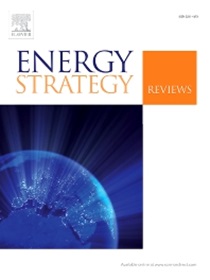Does income growth affect renewable energy or carbon emissions first? A Fourier-based analysis for renewable and fossil energies
IF 7.9
2区 工程技术
Q1 ENERGY & FUELS
引用次数: 0
Abstract
Environmental issues and global warming continue to drive researchers to investigate the validity of hypotheses regarding the environment. The environmental Kuznets curve (EKC) is the most popular hypothesis in the environmental economics, prompting researchers to propose a new hypothesis based on it. In this framework, the renewable energy Kuznets curve (RKC) hypothesis was proposed as a prerequisite for the EKC. According to the RKC, at the beginning of the economic growth process, an economy tends to use fossil fuels and reduce the use of renewable energy (RE) because fossil fuels are cheap. Then, as economic growth process continues and income reaches a threshold/turning point, the economy begins to rely more on RE sources. Such RE use indicates a U-shaped association between income and RE (the RKC hypothesis). Based on this information, the study compares the validity of EKC and RKC for the United States (USA) and aims to answer the question of whether the increase in per capita income initially increases RE or decreases carbon emissions. To test and compare the EKC and the RKC simultaneously and to capture smooth structural shifts, this paper uses time series techniques based on the Fourier method from 1973 to 2022. This paper presents results that support the validity of RKC and EKC. The outcomes also illustrate that the turning point of income is lower for the RKC hypothesis than for the EKC model. This suggests that the RKC hypothesis is a prerequisite for the EKC hypothesis. In other words, a higher income first helps in the deployment of renewable energies and then in the reduction of carbon emissions.
求助全文
约1分钟内获得全文
求助全文
来源期刊

Energy Strategy Reviews
Energy-Energy (miscellaneous)
CiteScore
12.80
自引率
4.90%
发文量
167
审稿时长
40 weeks
期刊介绍:
Energy Strategy Reviews is a gold open access journal that provides authoritative content on strategic decision-making and vision-sharing related to society''s energy needs.
Energy Strategy Reviews publishes:
• Analyses
• Methodologies
• Case Studies
• Reviews
And by invitation:
• Report Reviews
• Viewpoints
 求助内容:
求助内容: 应助结果提醒方式:
应助结果提醒方式:


